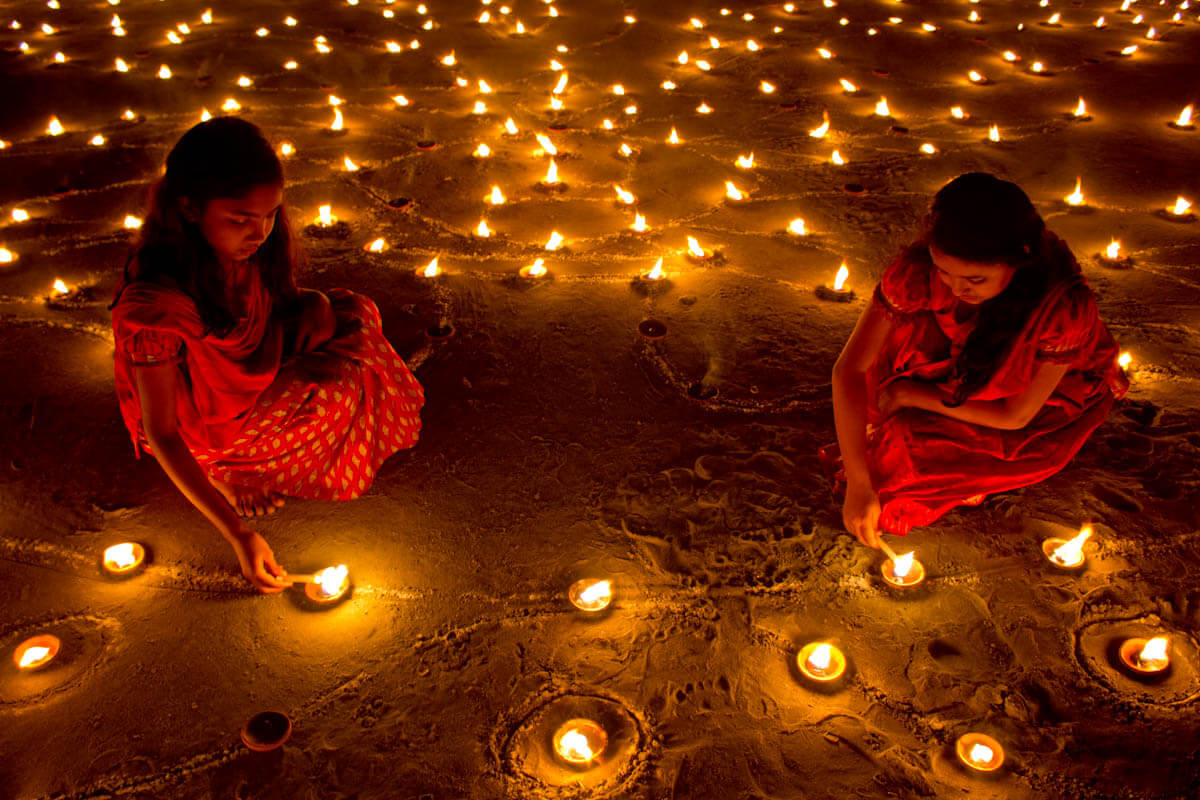



Diwali: 5 Traditions from India’s Festival of Lights
India’s Festival of Lights, which is known as Diwali, is celebrated over a period of five days each year in October. It symbolizes the victory of light over darkness and good over evil. The origin of the name Diwali comes from the Sanskrit word dipavali, which means “row of lights.” Diwali is one of the biggest festivals in Hinduism, but those of Sikh and Jain faiths also participate in the celebrations.
This year, the festival begins on October 22, 2022, but the main day (often referred to solely as Diwali) will be held on October 24, 2022. These dates vary each year depending on the Hindu lunar calendar. To help you better understand this meaningful holiday, here are a few Diwali traditions we think you should know about!
Day 1: Dhanteras

Preparations for Diwali traditions and activities begin on day one of the celebrations. On this day, families thoroughly clean their houses, make refurbishments, and throw away unwanted items. This is done to honor Lakshmi, the Hindu goddess of wealth who is known to only bless clean houses.
Day 2: Naraka Chaturdasi

On day two of the Diwali celebrations, people begin to decorate their doorways with rangoli, which includes beautiful patterns on the ground made with colored rice, powder, sand, or flower petals. Diwali art, such as the rangoli decoration, is thought to bring good luck and can help guide Lakshmi to their homes.
Day 3: Lakshmi Puja

Most of the Diwali traditions and activities occur on the main day of the festival, which is the third day from the start. These include lighting diya lamps, saying the Lakshmi puja prayer, eating traditional food, and enjoying fireworks.
A diya is an oil lamp used to illuminate homes during the Diwali festival and symbolizes prosperity and optimism. This is one of many traditions of Diwali based on light. Diyas are handmade out of clay and often painted in vibrant colors. They are lit on the third day of Diwali, the night of the new moon. This is the darkest night and the diyas are used to help fight darkness with light. Lighting of the diyas is one of the most significant rituals in Diwali traditions and celebrations.
Another component of Diwali traditions and activities is Lakshmi puja. This is a customary way to worship the goddess Lakshmi and is also celebrated on the third day of Diwali. The Lakshmi puja prayer is said across every Hindu household, as a way to appeal to the goddess so you are blessed with a wealthy and prosperous life. If you’re interested in learning more about the Lakshmi puja prayer, download Tandem and match with a native Hindu speaker today!
After the prayer has been said, it’s followed by a mouth-watering feast of traditional Diwali food. Many families prepare savory dishes and sweet delicacies, but traditions of Diwali also revolve around community. Therefore, many Indian sweets, including jalebi, karanji, and coconut laddoo are given as gifts to family, friends, neighbors, and those less fortunate.
Finally, to end the main day of Diwali, the festival of lights, a spectacular fireworks display is enjoyed. The fireworks light up the night sky all over India and many other cities across the world.
Day 4: Govardhan Puja

Diwali continues after the main festivities, as the fourth day marks the turn of the New Year. During this time, Diwali traditions include visiting friends and families and exchanging gifts and best wishes for the year ahead.
Day 5: Bhai Dooj

On the fifth and final day of Diwali, brothers will visit the homes of their married sisters, who welcome them with open arms and a warm, delicious meal. If visitation is not possible, sisters spend time praying for the longevity and prosperity of their brothers.
Although these Diwali traditions represent a general overview of the many cultural differences throughout India, we understand that each region has their own practices. To all of our readers celebrating Diwali, we wish you a healthy and prosperous year ahead!
If you’re interested in learning more about the traditional celebrations of Diwali and the beautiful languages that surround it, download Tandem today. With millions of members, Tandem is one of the largest language learning communities in the world. With our Tandem app, you can connect with native speakers all over the world and practice languages via text, audio message, and video call. This is a great way to make lifelong friendships with people in cultures of your target language. Don’t wait, download Tandem for free today.



